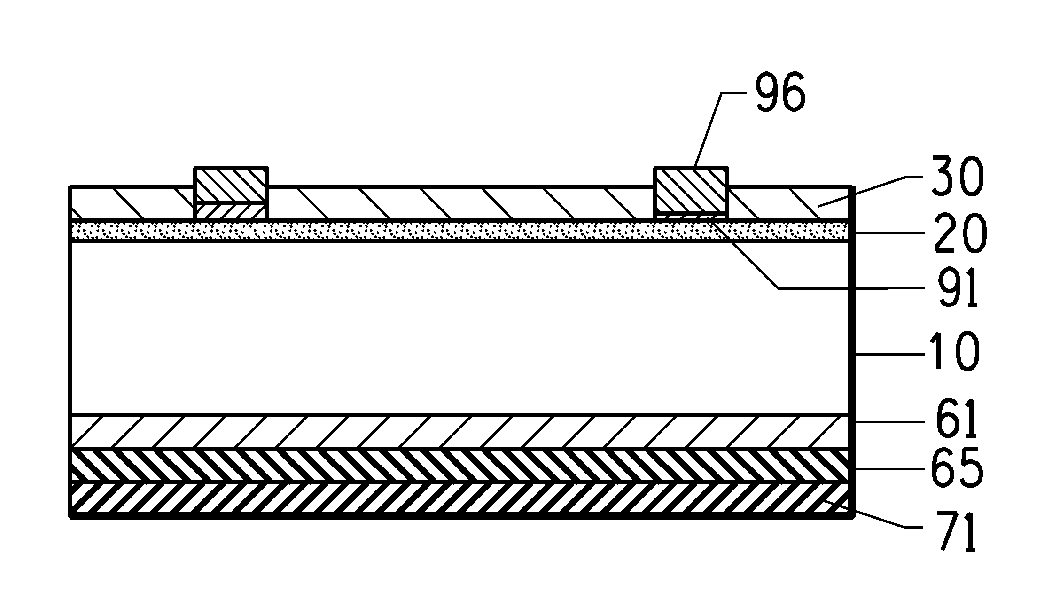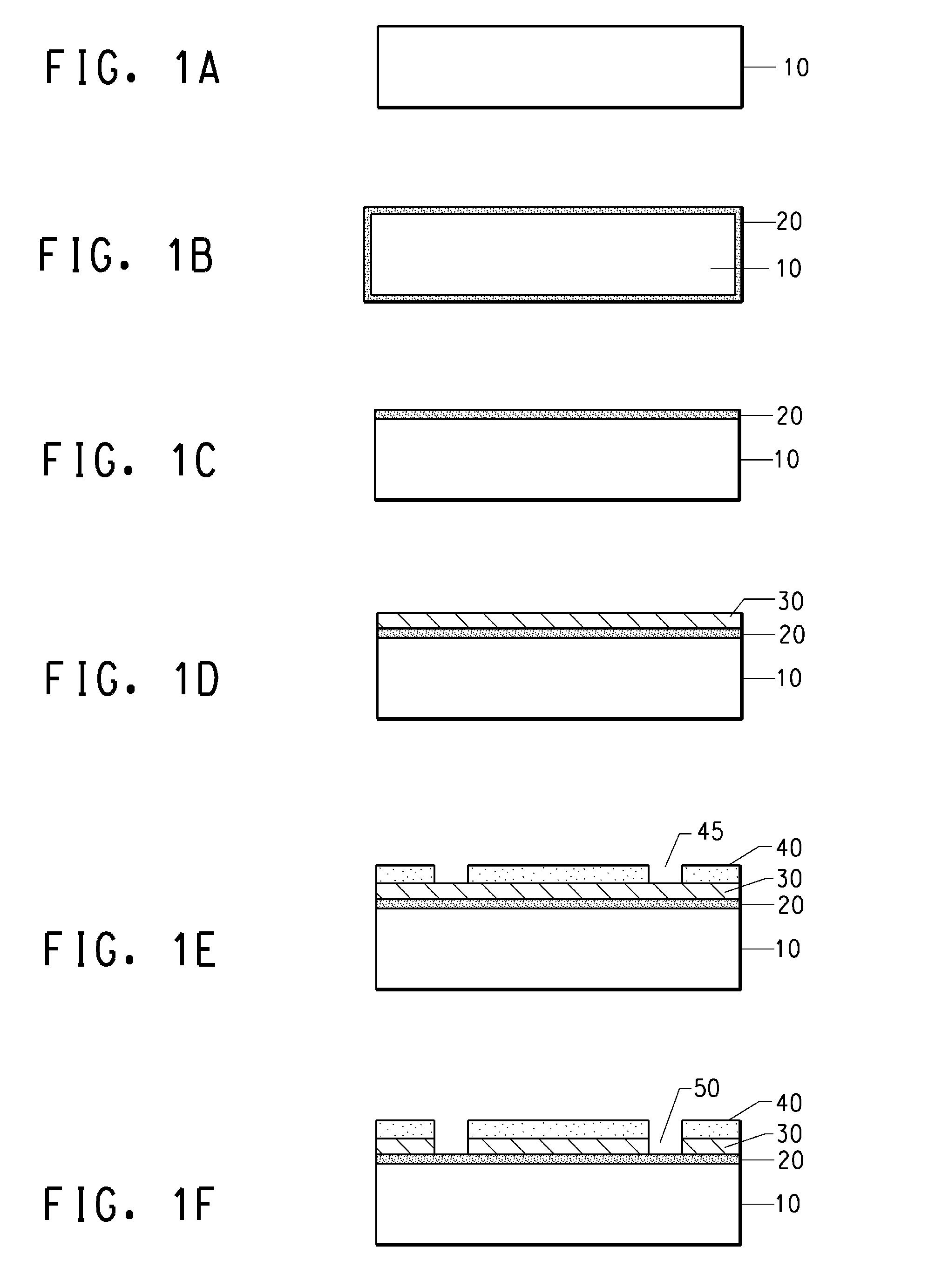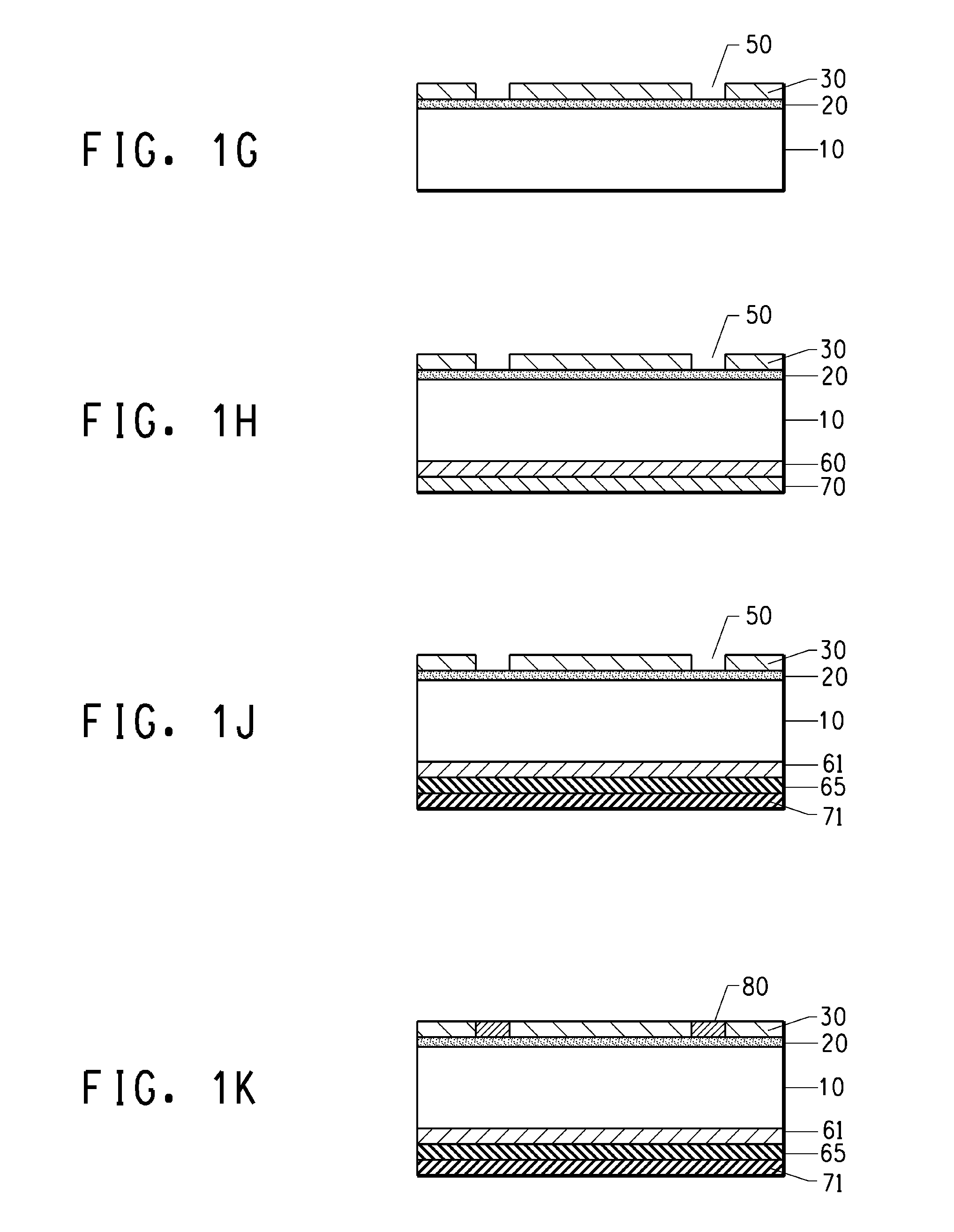Compositions and processes for forming photovoltaic devices
a photovoltaic device and photovoltaic technology, applied in the direction of discharge tube main electrodes, conductors, metal/alloy conductors, etc., can solve the problems of reducing efficiency, higher contact resistance, and difficulty in forming low-resistance contacts to bipolar silicon devices
- Summary
- Abstract
- Description
- Claims
- Application Information
AI Technical Summary
Benefits of technology
Problems solved by technology
Method used
Image
Examples
Embodiment Construction
[0043]Photovoltaic devices having a low Shottky barrier height electrode contact to n-type silicon are disclosed. Also disclosed are methods for making photovoltaic devices having a low Shottky barrier height electrode contact to n-type silicon. The disclosed photovoltaic devices are solar cells but they may also be other photovoltaic devices having electrode contacts to n-type silicon such as photodetectors or light emitting diodes. The disclosed embodiment is a solar cell with a front face electrode on n-type silicon having a low Shottky barrier height electrode contact comprised of silicides comprising one or more transition metals or rare earth metals.
[0044]As used herein, the term “reactive metal” refers to a metal or mixtures of metals that reacts with silicon on firing to a form a stable highly conductive metal silicide. Such metals may include metals or mixtures thereof from titanium (Ti), zirconium (Zr), hafnium (Hf), tantalum (Ta), niobium (Nb) vanadium (V), chromium, (Cr)...
PUM
| Property | Measurement | Unit |
|---|---|---|
| diameter | aaaaa | aaaaa |
| weight percent | aaaaa | aaaaa |
| weight percent | aaaaa | aaaaa |
Abstract
Description
Claims
Application Information
 Login to View More
Login to View More - R&D
- Intellectual Property
- Life Sciences
- Materials
- Tech Scout
- Unparalleled Data Quality
- Higher Quality Content
- 60% Fewer Hallucinations
Browse by: Latest US Patents, China's latest patents, Technical Efficacy Thesaurus, Application Domain, Technology Topic, Popular Technical Reports.
© 2025 PatSnap. All rights reserved.Legal|Privacy policy|Modern Slavery Act Transparency Statement|Sitemap|About US| Contact US: help@patsnap.com



